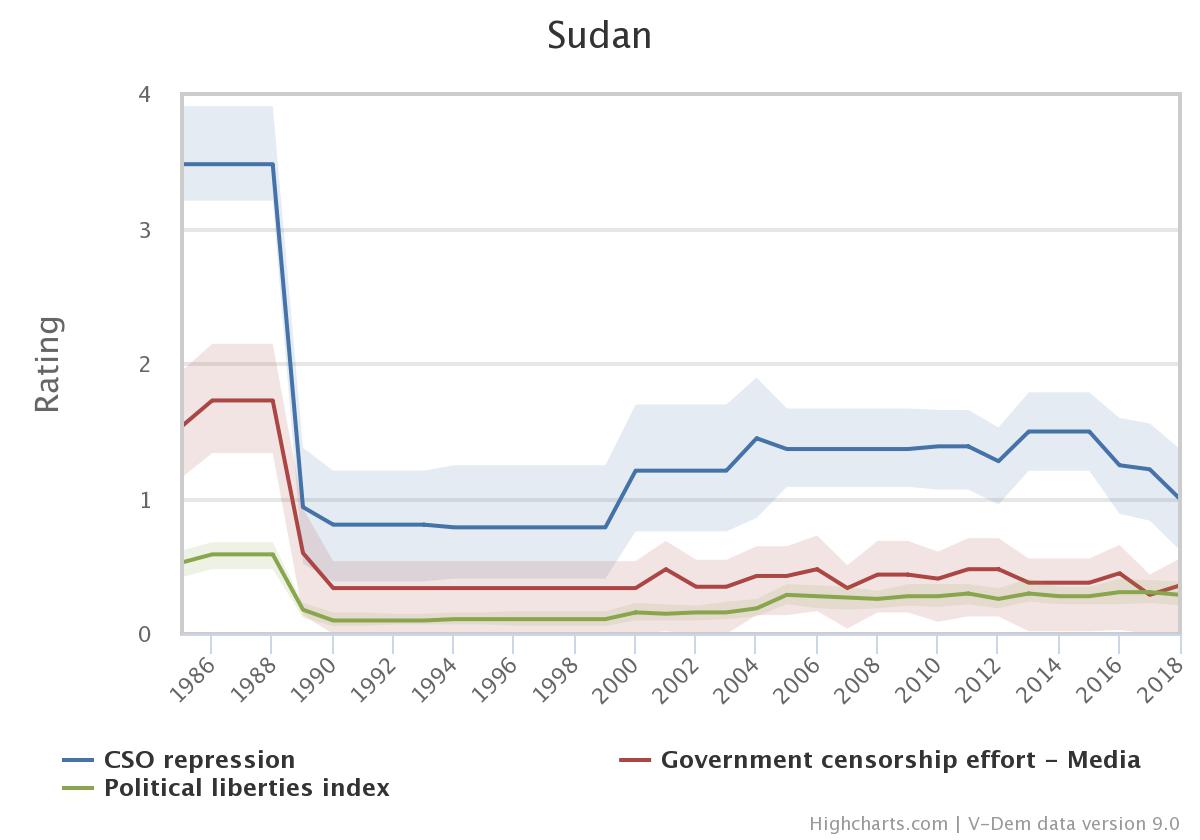Revolution in Sudan
By: V-Dem Staff
May 06, 2019
Months of massive food shortages and rising food prices recently drove thousands of Sudanese to the streets in protest. This led to the end of the 30-year reign by Omar al-Bashir when the former dictator was overthrown on 11th April 2019. His rule was characterized by brutality and heavy restrictions on political liberties. Political and civil society actors opposing al-Bashir and his regime were repressed, imprisoned and tortured. The media was also heavily controlled and censored.
The country’s transitional military council, the same military that sustained al-Bashir’s regime, has currently taken over rule. They have said they will govern for a maximum of two years until civilian rule is established. Understandably, the demonstrators, supported by the international community, have rejected this and demand an immediate transfer of power to the civilians. However, the military has refused to accede to this request.
V-Dem’s Country Graph tool illustrates the changes in civil society repression, political liberties and the government’s efforts to censor the media in Sudan since 1985. Declines are observed in all three indicators since 1989 – the year al-Bashir and his regime came to power. Civil Society Organization (CSO) repression reflects the government’s attempts to repress civil society organizations. It is measured from 0 to 4, with 0 indicating civil society is severely repressed and 4, no repression. The Political Liberties index looks at the extent to which political liberties are respected. It is scaled from 0 (low level of political liberties) to 1 (high level of political liberties). Government Censorship Effort of the Media captures the extent to which governments directly or indirectly try to censor the print and/or broadcast media. It is measured from 0 to 4, with 0 indicating attempts by the government are direct and frequent and 4, government censorship of the media rarely occurs.


